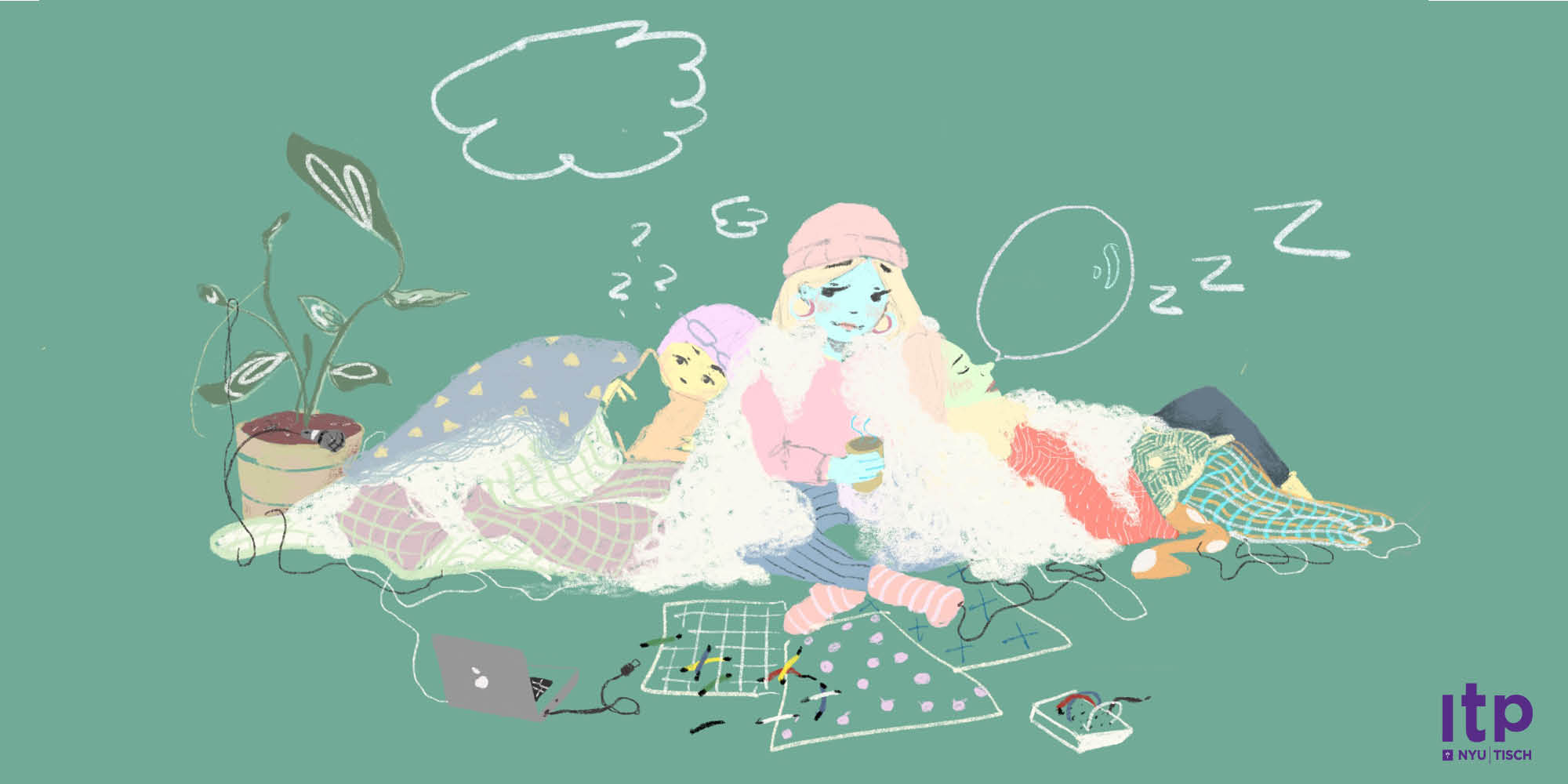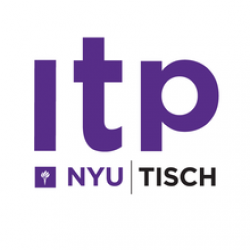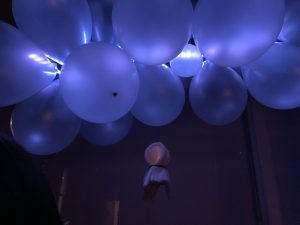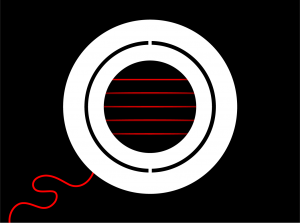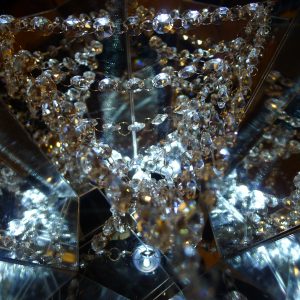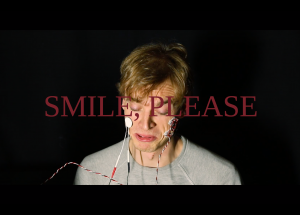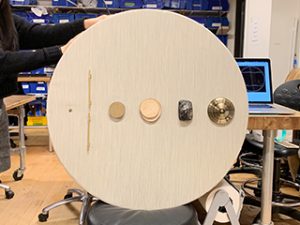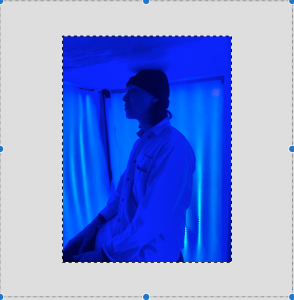Mingna Li, Yuanyuan Wang
A magical instance to connect with outer-space creature (alien).
Description
This project is inspired by our interest in magic, and we want to create a scenario that human can communicate with the unknown. Through this installation, user can connect with creature-like objects through movement. In our human world, we talk in complex languages, but sometimes, unspoken language can pull our hearts even closer, such as a smile, a hug, or a moment together. This installation is intended to recreate that beautiful connection between creatures.
User wears a simple finger glove, which is an alien communication device. Then, user lies down on a cloud (a cushion that looks like cloud). There will be about 10 aliens above user mounted on a frame. When user points his/her finger to aliens, aliens will come down to user. When users points away, aliens slowly retract.
We will use IR sensor to detect whether the user is pointing at aliens. User is wearing IR emitter on the alien communication device, and aliens have IR receivers in them. Aliens are controlled by stepper motors. Pulley is attached to the stepper. When user and alien make connection, stepper releases wires and aliens move down. When the connection is lost, stepper reverses, and aliens will move back to their home.
Classes
Introduction to Physical Computing, Introduction to Physical Computing
